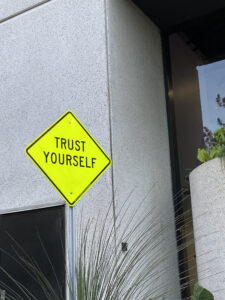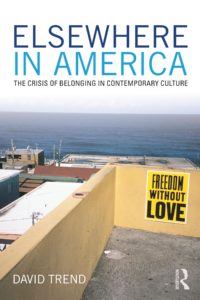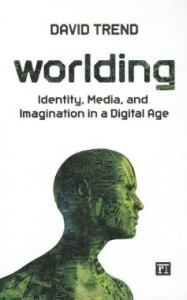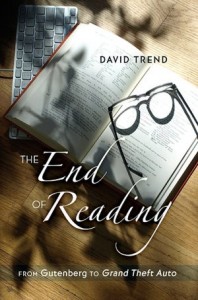History has shown that crisis brings out creativity, as people find themselves facing unexpected challenges and innovating out of necessity. Countless innovations and scientific breakthroughs have come from disasters and wars – penicillin, jet engines, and the internet to name but a few. Can we muster this same energy in these stay-at-home days of coronavirus?
 I’ve been getting this question from University of California undergraduates in a creativity class I teach (now online, of course). Many are looking to creativity to feel better, but say they don’t know how. I reply that we are all acting creatively in countless ways, but rarely recognize our actions as such.
I’ve been getting this question from University of California undergraduates in a creativity class I teach (now online, of course). Many are looking to creativity to feel better, but say they don’t know how. I reply that we are all acting creatively in countless ways, but rarely recognize our actions as such.
There is nothing unusual in this creative disconnect. Recent surveys show 80% of the American public seeing creativity as essential to their lives and work, but that 70% think they just don’t have it in them. Much of this comes from misguide views about creativity, often coming from stereotypes about natural talent, inherent genius, and artistic originality.
The problem has structural roots. For years researchers have reported a “creativity crisis” in American schools and business, generally due to risk-avoidance owing to economic anxiety. Students are obsessed with grades and future earnings, while companies stick with what already works. This results in a climate of lingering anxiety, only amplified by a fear-driven formulas of much news and entertainment.
With nowhere to turn, a stressed-out America now runs to the now-booming self-help industry, which promises salvation in finding one’s “inner artist” or regaining the “magic” of childhood. The coronavirus epidemic has pushed this trend to new heights, as consumers search for answers from external sources.
The result is a growing panic as people scramble to find, build, or otherwise maximize their creative profiles – often blaming themselves when they fail. And of course failure is inevitable, since recognized forms of creative success place it out of reach for ordinary citizens. An entrenched culture of media celebrity props up this view.
It’s time to view creativity as the universal quality it really is. All of us have it, just like we have intelligence. But like the failures of I.Q. testing long ago revealed, the problem lies in valuing only certain types of ability. This not only leaves out anyone who isn’t an “artist,” but it’s often loaded with biases against those lacking the time or resources to gain conventionally-recognized skills.
Especially in this moment of crisis, we need to embrace the “everyday creativity” in the typical things we do in solving simple problems, improvising around the house, or making a meal from leftovers. The online popularity of DIY mask-making is a great example of this, although, once again, few see this activity as a “creative” pursuit. Ditto for postings on Facebook, Instagram, or Twitter –– all so ubiquitous that their creativity seems inconsequential.
This dismissal of everyday creativity also comes in part from beliefs that “creative” always means something “new” or “original.” The truth is that most famous creatives borrowed from the past or built of work by others. Michelangelo copied classical sculpture, much as Shakespeare did with ancient myths. And no, Steve Jobs did not invent the iPhone by himself.
Cognitive science says that mimicry is an essential part of human learning and communication. Researchers explain that most creativity is “combinational” in that we put together already known or found elements to create something else (like decorating a room). This can lead to “exploratory” creativity when combinations produce unpredicted outcomes (making up a new recipe). Creativity never comes from a vacuum.
Generosity is another important part of creativity. This is because nearly all creative acts are done with someone or with some recipient in mind. Psychology long has recognized that doing for others returns self-esteem to the giver. In everyday creativity this comes from that satisfaction of begin appreciated, needed, or simply connected to others.
One joyful example of this of such social creativity is the global “clap-for-carers” phenomenon happening daily all around the world. Usually at 7 or 8 pm, homebound people go to their windows and doorways, and start clapping, hooting, or banging pans to recognize health care workers who are risking themselves to save lives.
It’s a spontaneous creativity much like that seen at rock concerts, now transformed as a collective affirmation. The beauty of these ordinary forms of creativity lies in their availability to everyone. We all can be creative if we realize that we indeed to have it in us, use it all the time, and need to give ourselves credit.








